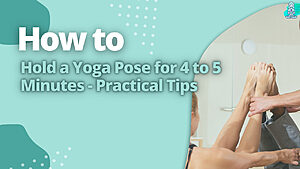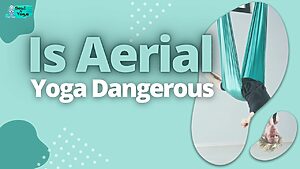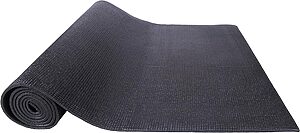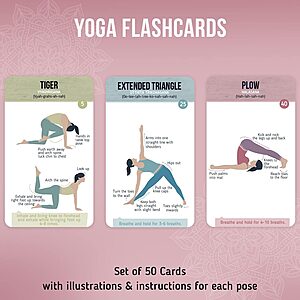Do you ever feel like you’re just too busy to do yoga? Do you avoid it because of the time involved or because you don’t have the right equipment?
Well, it turns out that there’s another reason why you should avoid doing yoga, and that’s if you have a medical condition. Yoga is an ancient art form designed to help keep the body healthy and flexible. But not everyone can practice yoga safely.
In this blog post, we’ll go over some of the most common conditions that prevent people from doing yoga.
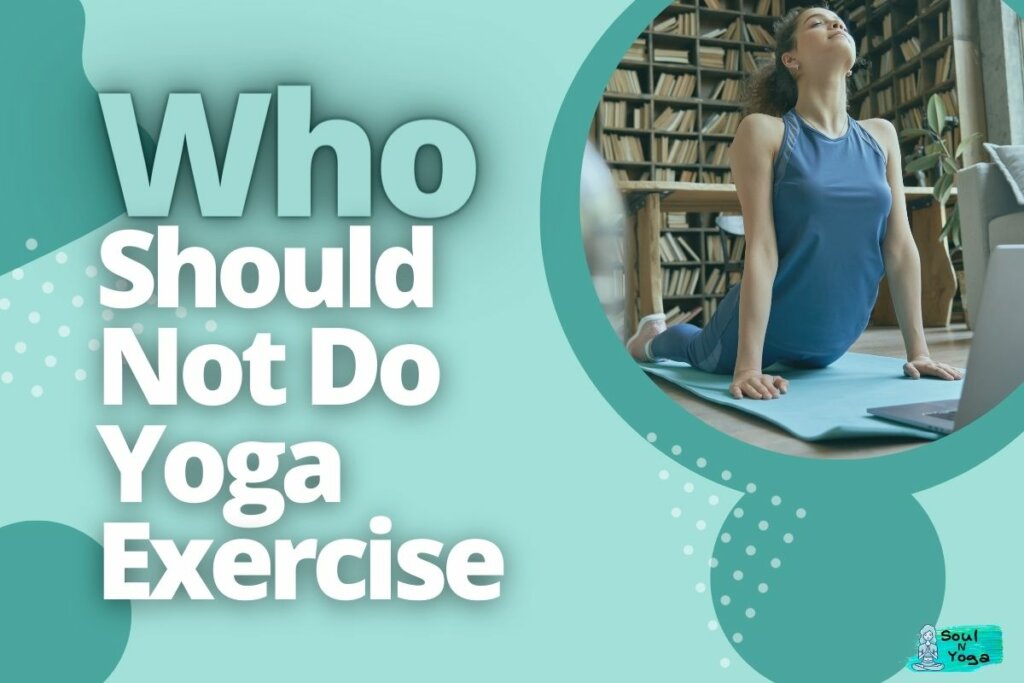
Here’s The Answer To Who Should Not Do Yoga Exercise
The list of people who should not do yoga includes pregnant women, seniors, and those with health conditions like high blood pressure, glaucoma, and osteoporosis.
Those with a history of mental disorders like anxiety or depression should also steer clear of this practice.
People with chronic health conditions like heart problems, back problems, or high blood pressure should talk to their doctors before starting a yoga routine.
Additionally, people with certain mental health conditions like anxiety or depression should also consult their doctors before starting a yoga routine, as yoga can trigger the feelings associated with these conditions.
People With Recent Injury
If you are someone who has recently injured yourself, yoga can be a tricky thing to practice. But it is not the best thing for everyone.
It is important to know that if you are not careful when practicing yoga, you may end up doing more harm than good. This can especially be true if the injury affects your nervous system or joints in any way.
There are also certain persons who should not practice yoga at all due to chronic diseases. That makes it impossible for them to perform certain poses without causing themselves more pain or discomfort than they would like (or at all).
Examples of these conditions include:
- Arthritis – Arthritis involves inflammation of one or more joints in the body and causes pain, swelling, and stiffness when moving them around too much. Thus, this makes it dangerous for people with arthritis because they may further damage their joints when trying out new positions during their exercises which could lead them down a slippery slope toward further health complications later on down the road!
- Joint Replacement Surgery – If surgery was performed on your body recently, then please consider another form of exercise instead since this type requires less strain on muscles.
Pregnant Woman
Pregnant women should not practice yoga. The reason why pregnant women should not do yoga is that there are some specific poses that can cause harm to a woman’s body during pregnancy.
Yoga instructors and doctors say that it is best to avoid all forms of exercise in the second trimester, including yoga. This is because the baby is underdeveloped at this point and has not yet formed bones or muscles.
If you want to stay active, swimming and walking are two good options for pregnant women who want to keep up their endurance levels without overdoing it or risking injury.
People With Hypertension
If you suffer from hypertension, yoga may not be the best choice for your workout. The reason why is because it can increase blood pressure, and that’s a big no-no if you have hypertension.
- So what are alternatives to yoga that are just as good but don’t cause any problems? They include walking, jogging and swimming.
- Of course, these will not give your body the same benefits as yoga, but they won’t do any harm either, so they’re good alternatives if you’re suffering from hypertension or heart disease (which goes along with having high blood pressure).
If a doctor has diagnosed you with high blood pressure, then he/she will likely recommend exercises that won’t cause any problems, such as walking or jogging and eating healthy foods like fruits and vegetables instead of junk food!
People With Cardiovascular Disease
Avoid yoga if you have a history of cardiovascular disease. This can be an issue for people who have had a heart attack and are trying to get back into shape, as well as those with congenital defects in their hearts.
- Yoga involves deep breathing, which can be dangerous for people with cardiovascular problems, especially if they don’t know how to control themselves properly during the exercise session.
- If you have a herniated disc or spine injury, then yoga might be dangerous for you if you have damaged discs from an accident or from overuse (like runners).
Then it may not be wise for these individuals to take up yoga because the poses require bending at various angles that could cause more damage than what already exists in the body – especially when done incorrectly!
People With Epilepsy
- People with epilepsy should avoid yoga.
- They should also avoid meditation, hypnosis and relaxation techniques, biofeedback, and deep breathing exercises.
- Stress management is another area to be avoided by those with epilepsy because it can increase the risk of seizures.
How To Tell If Yoga Is Right For You

To determine if yoga is right for you:
- Ask yourself if you have any medical conditions that might make it dangerous to do yoga. If so, avoid it.
- Do some research on the benefits of yoga and the potential risks involved with this exercise method by reading online articles or books about this subject.
- Consider trying alternative exercises such as tai chi, Pilates, walking in nature, or swimming instead of doing yoga if you are unsure whether or not it would be safe for your body type/condition/lifestyle (i.e., pregnant women).
Yoga Can Be Beneficial For Everyone, But Not All Yoga Poses Are Created Equal
Some yoga poses are more dangerous than others, and some poses are better suited for certain people. For example, elderly people should avoid doing extreme twists because it puts too much stress on their spine.
If you are overweight or have a bad back, avoid certain asanas like the Cobra pose because they may cause injury to your back. If you’re a beginner at yoga, be sure to practice under the guidance of a well-qualified yoga teacher.
- Even if you’re in good physical shape and feel comfortable doing all the other parts of yoga, don’t try advanced poses like Viparita Karani unless they have been taught by an experienced teacher who can guide you through them safely.
- If you have back pain, be sure to consult with a yoga instructor before beginning a regular yoga practice. Yoga can be beneficial for people suffering from carpal tunnel syndrome by helping to stretch and strengthen the muscles in the abdomen and improve circulation.
Avoid Certain Yoga Poses That Have A High Injury Risk
Poses that put pressure on the neck or head, for example, can lead to carpal tunnel syndrome. Other poses that require you to twist your body can lead to lower back pain.
- Avoid Certain Yoga Poses That Have A High Injury Risk
- Avoid doing headstands, handstands, or shoulder stands
- Avoid doing backbends if you have a history of lower back problems
- Avoid doing twists if you have a history of disc problems
- Heart rate is another factor to consider when doing yoga. Some poses can raise your heart rate to unsafe levels.
Ligaments are also at risk in some yoga poses. Overstretching them can cause serious injuries, especially if you hold the pose for long periods of time. Sprains are also a risk in yoga, particularly in poses that require you to balance one leg.
Do Not Over-Exert Yourself In Yoga Poses

While yoga poses are meant to be challenging, there is such a thing as pushing yourself too far. If you find that you’re feeling pain in your body when trying to do a certain pose, don’t force yourself into it!
The idea behind yoga is not to injure yourself but rather to embrace the challenge of being more flexible and finding more comfort within your body.
Take it slow, listen to your body and remember that this practice can be done at any age—even if you are older or have suffered an injury before.
However, even if someone has been exercising regularly for years, they may still need some practice before attempting some advanced postures, so don’t feel like there is anything wrong with taking things slowly!
Do Not Take Yoga Too Seriously – It Is Just A Hobby
Yoga is not a competitive sport. It is true that some yoga centers have their own rules and standards of performance. But if you are doing it just for fun, then you should let go of any expectation to be perfect or win anything.
Yoga needs to be enjoyed without any pressure or stress. Yoga is not a job either – at least not in the way we understand it as ‘work’ these days.
It’s more like a hobby or pastime activity that does not require much effort on your part apart from practicing regularly.
So there is no need for you to take it too seriously because, once again, this will create unnecessary pressure on yourself and make things worse instead of better!
If You Have A Previous History Of Serious Back Problems, Then Do Not Practice Yoga
Yoga is not for everyone. Yoga can be harmful if done incorrectly or without proper guidance and supervision. If you are unsure whether it’s right for you, consult your doctor or health care provider first.
Yoga should not replace medical treatment or physical therapy for any condition that requires medical intervention.
It is also important to understand that even with expert instruction and training in the practice of yoga, injuries may still occur during the course of one’s participation in the discipline.
Yoga is not intended as an alternative to exercising programs involving strength-building exercises such as weight lifting or vigorous aerobic activity like running sprints on a treadmill at high speeds (excessive running).
Yoga does not burn calories faster than other forms of exercise; however, it does provide many health benefits, including improved circulation, which helps deliver oxygenated blood throughout our bodies more efficiently.
How Can They Mitigate The Risks Involved And Still Practice Yoga?
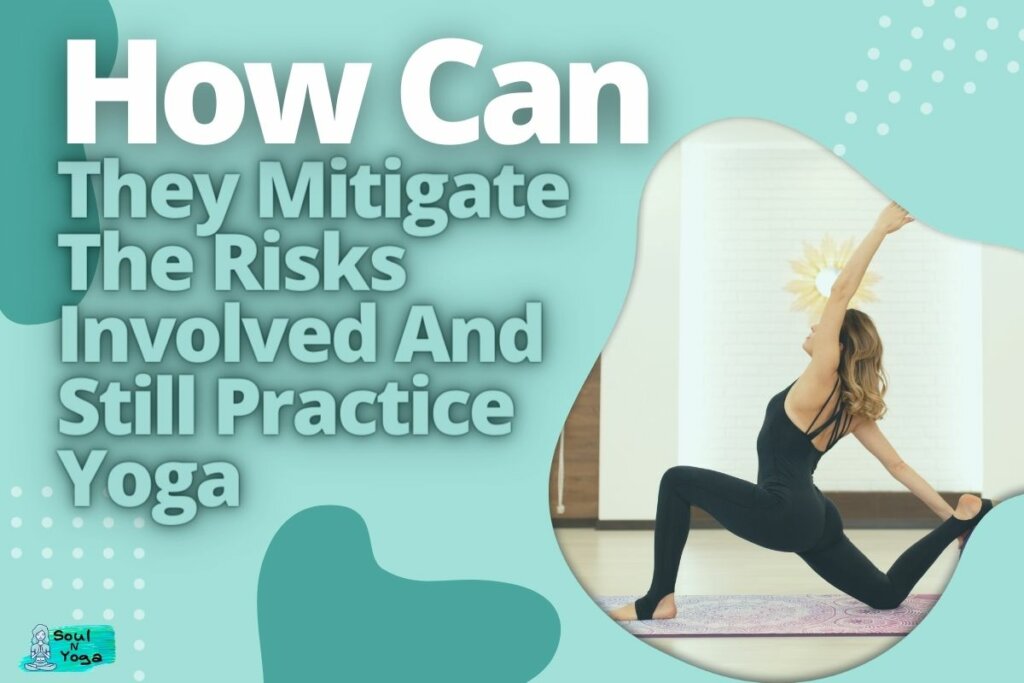
One of the most important things that yoga practitioners can do to reduce the risks involved in yoga is to choose the right yoga class for their level of experience.
- There are many different types of yoga, and not all of them are appropriate for beginners. Finding a beginner’s yoga class is critical if you’re new to the practice.
- This will help to ensure that you are not doing any poses that are beyond your level of experience. In addition to choosing the right yoga class, it is also important to be aware of your own physical limitations.
Yoga is a physical activity, and like any other physical activity, there is always the risk of injury. If you have any medical conditions or injuries, it is important to consult with your doctor before beginning a yoga practice.
- You should only do yoga if your doctor gives you the all-clear, so be sure to listen to your body. If something doesn’t feel right, don’t do it.
- Another way to reduce the risks involved in yoga is to be mindful of your alignment. Proper alignment is important in all yoga poses, but it is especially important in poses that put a lot of weight on your joints.
If you are not sure of the proper alignment for a pose, be sure to ask your yoga teacher.
What Are Other Exercise One Can Do Instead Of Yoga?

Swimming is a great form of exercise that you can do at home or in a pool. It’s low-impact, so it won’t cause any injuries to your joints or muscles.
If you don’t have access to a pool near you, consider running instead since both are great exercises that can help improve your overall health while reducing stress levels as well as improving mental focus.
Running is another popular choice when it comes to cardio exercises. Thanks to its low-impact nature, which means anyone can do it regardless of age or fitness level.
Without worrying about potential injuries due to overuse, like with other forms such as jogging, for example (which involves repetitive motions).
Running also burns calories quickly, so if weight loss is what motivates someone who wants better overall health, then this could be an ideal choice for them!
Jogging is similar but slightly different from running: whereas running requires one foot after another on pavement surfaces without stopping until finished (when the legs give out).
Whereas jogging requires both feet to move simultaneously together on pavement surfaces before moving ahead after completion.
This allows greater freedom throughout movement patterns allowing more variation within movements while also requiring less energy output per unit distance travelled, thus making an excellent choice.
To Wrap Up
You might also want to consider doing other forms of exercise that are not as intense or high-impact. These include walking, swimming, cycling, and low-resistance weight training.
All these types of exercises will help improve your overall health without putting too much pressure on the body. The conclusion of this blog post is that there is no real consensus in the scientific community that shows that yoga exercise is bad for you.
So, sometimes if you want to do yoga exercise, there is no need to worry about your health. So if you want to do yoga, be sure to get started! The harms are manageable, and you should also consider the negative side effects.
To conclude, we suggest that you read through this blog post to get a better understanding of the pros and cons of doing Yoga exercises.
Frequently Asked Questions
Is yoga exercise safe for pregnant women?
Prenatal yoga can be safe and beneficial for pregnant women. However, it’s important to choose the right prenatal yoga routine and avoid moves that may overstretch and stress your body. Likewise, you should be aware of your body and stop the routine if you feel pain.
What are the health risks associated with yoga?
There are various health risks associated with yoga. Some of them are as follows: Increased stress and anxiety, Unhealthy sleep patterns, pain in the neck and back, Muscle weakness, Joint pain, and Digestive issues. In addition to these, yoga can also cause muscle injuries, increased body temperature, and irregular heartbeats.
Should I use a mat when practicing yoga at home, or can I just use my bare feet on the floor as long as they are clean and dry?
Yoga mats provide a cushion for your body and prevent the discomfort of the floor by keeping your body at a comfortable angle. They also provide traction, so you don’t slip or slide during certain poses. Also, using a yoga mat reduces the chance of you slipping or sliding in certain poses like downward dog.
Why should one avoid doing yoga?
Yoga is not just a form of exercise. It’s an ancient Indian science that can take your health to the next level if practiced regularly. However, one should avoid practicing yoga and should stay away from it because some people are not suitable for this practice, and they may suffer from various health problems as a result of it. As well as, yoga requires certain body movements and postures, which can be harmful to people with certain health conditions, such as pregnancy or back problems.
My name is Mugen Seki, and I’m a painter and yoga enthusiast who is passionate about bringing together art and exercise in ways that help people connect with their inner selves. When I’m not painting, I’m practicing yoga. And when I’m not doing either of those things, I’m usually thinking about them.
- How to Hold a Yoga Pose for 4 to 5 Minutes – Practical Tips
- A Guide to Finding the Perfect Yoga Mat for Carpet Floors
- Can You Add Yoga To Fitbit Luxe (Unlock the Power)
- Can You Add Yoga To Garmin Vivoactive (Yoga On The Go)
- Is Aerial Yoga Dangerous (The Scary Truth)
- What Is The Weight Limit For Aerial Yoga (Exploring The Possibilities)


